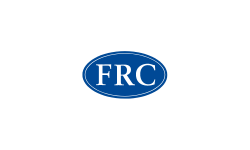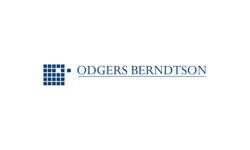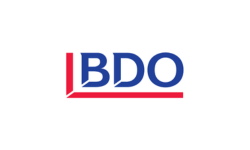Psychological safety in boardrooms

Arran Heal is Managing Director at workplace relationships experts CMP, arran.heal@cmpsolutions.com , www.cmpsolutions.com
Arran Heal looks at the importance of psychological safety in the boardroom on the performance of the organisation as a whole.
The term psychological safety was coined by Amy Edmondson at Harvard Business School to describe the ‘shared belief held by members of a team that the team is safe for interpersonal risk-taking. It describes a team climate characterised by interpersonal trust and mutual respect in which people are comfortable being themselves. There is a sense of confidence that the team will not embarrass, reject or punish someone for speaking up.’
Professor Edmondson’s research shows how organisations with higher levels of psychological safety perform better on almost any metric or KPI, in comparison to organisations that have a low psychological safety score. Working in an environment with low levels of psychological safety has an impact on confidence and wellbeing, and can lead to team members not wanting to ask for help and taking on too much. Low psychological safety gets in the way of team performance, innovation and learning, and can also significantly impact individual and team wellbeing and success. More supporting evidence has come from Google’s Project Aristotle, a two-year study into what makes a highperforming team which concluded that psychological safety was one of the five key dynamics involved.
So there is strong evidence of the value of psychological safety at organisational level ‒ but boards need psychological safety too. Senior teams have tended to have been less of a focus in organisations ‒ because psychological safety is technically about the ‘low-power actors’, making sure they’re able to raise concerns and questions without worrying about implications ‒ and board directors aren’t meant to need help with that.
A survey by the IMD management school among 1,000 directors, however, has found that fewer than half believed they were part of boards that were psychologically safe. Having high levels of accountability as a board member can lead to a sense of vulnerability: so self-protection comes first. But the essential job of boards is to have open, honest and mature conversations around organisational risks. The quality of conversations is the basis of strategy, dealing with the major challenges, ensuring the organisation is working, resilient and adaptable.
High-profile examples of boards which have demonstrated signs of a lack of psychological safety include Uber, where there have been media reports of domineering and disruptive behaviour by the co-founder in board meetings; the ‘messianic’ leader of WeWork who wouldn’t listen to criticisms of a failing business model; and Wirecard, where the board members weren’t prepared to listen to claims of fraud, leaving problems to grow and grow.
Poor quality conversations and a lack of feelings of mutual support are the basic indications of a lack of psychological safety in boards. And a faulty board ultimately means a faulty organisation. Very often the problem is ‘prozac thinking’ where no-one wants to be the negative voice, everything’s ‘great and getting better’. Questions and issues that are fundamental to the future progress of the organisation get smothered and there’s poor decision-making.
In a recent article in the Financial Times, the IMD pointed to some ideas for how an executive can gauge the existing levels of psychological safety in their group. Such as getting directors to think about behaviours that encourage or hamper open communication, then ending each meeting with a quick review or poll of what they’ve seen.
Or, by running ‘non-confrontational’ simulations observed by independent coaches, and then giving feedback to each other on issues like self-awareness. Another suggestion is using a ‘sociogram’, a visual representation of positions and connections within a board, with members having the chance to use free association and ‘uncover hidden patterns within the group … exposing the unconscious roles that have emerged within the board … particularly how individuals may have inadvertently contributed to sustaining the problematic role of a “hero” who can do no wrong’.
There is always a danger with any of these ideas, in that they encourage power games, the use of influence and alliances that only perpetuate problems and inhibitions. Instead, individuals need to have the sense of trust and security needed to speak for themselves: to keep on telling the truth.
One constructive way forward for boards initially is to make use of a Neutral Assessment. This is an informal process aimed at identifying and exploring the relationships of groups and situations of low psychological safety by understanding the perspectives of individuals involved. The process provides the opportunity for board members to voice their concerns and feel heard as individuals, while also generating actionable solutions to tackle any problems. A ‘no-blame’ report is compiled, summarising the information gained through participant interviews, anonymously, with recommendations for next steps.
There is also a specific Psychological Safety Index (PSI) tool that can be used to assess the current state of attitudes and relationships. The process involves mapping how board members perceive the level of psychological safety in their immediate team context, followed by a debrief on the results as the basis for change. Psychological safety is measured on four dimensions: the attitude to risk and failure (how permissible it is to make mistakes?); open conversations (whether and how often difficult and sensitive topics can be discussed openly); willingness to help (how likely board members are to offer and ask for help) and inclusivity and diversity (the degree to which people feel they can be all of themselves).
The results can be collated and used as a framework for further personal development: with open discussion of behaviours that may have caused problems in the past ‒ and, critically, a recognition of how open conversations and taking measured risks can build trust, and go some way to building a culture of respect and understanding within the team.
Directors should be role models when it comes to psychological safety, and that means adopting the following kinds of practices, and being visible in doing so: asking for upward feedback; acknowledging mistakes; being open to opinions that are different from their own; being approachable and encouraging reports to ask questions; and being seen to bring more of themselves to work, rather than always wearing a ‘professional mask’.
More fundamentally still, the senior team needs to have the ‘conversational integrity’ to have those all-important honest ‒ and sometimes difficult ‒ conversations. Organisations continue to acknowledge that people tend to rise through the ranks to senior manager and board level because of their experience and technical expertise rather than particular people or management skills. That means making sure people are listening to each other, are self-aware, curious and conscious of their impact on others; that they have the kinds of conversation skills that equip us to be resilient and adaptable, to appreciate the benefits of different views, different people.
The more senior and experienced the people involved in a team, the more likely there will be assumptions about capability. So there can be a vicious circle of low self-awareness. Company secretaries and leaders themselves need to have the courage to speak out on the importance of psychological safety at senior levels ‒ and the bigger picture in terms of building a more positive culture for the entire organisation.
Organisation-wide psychological safety
A culture of psychological safety in the boardroom is more likely when it is already a priority in the rest of the organisation ‒ and vice-versa.
There needs to be awareness of the issues and a focus on delivery from top to bottom, backed up by a pro-active strategy and close attention to practice:
1. Have a clear vision and strong mission to uphold your values and behavioural standards
When it comes to company culture, there are three key ingredients to ensure it is healthy: (a) A strong mission and vision that helps drive more clarity for people in terms of their roles and an aligned sense of purpose for employees. (b) The way in which behavioural expectations are aligned and supported by the organisation and modelled by the board members. (c) Making sure there is the prospect of professional and personal growth for everyone that seeks it. In this way, the overarching culture plays a role in encouraging the ‘pulling and sharing’ of feedback (rather than it needing to be ‘pushed’).
2. Create a ‘safe’ environment
People at all levels need to feel comfortable voicing their opinions and not fear being judged (or repercussions). The same ground rules for good conversations apply both within the boardrooms and outside, and need to be shared. These could be as simple as: Showing empathy. Allowing diverse perspectives (so that out of the box suggestions are encouraged and listened to). No interruptions. Welcoming all ideas equally. Never placing blame or judgement. Treating failures as opportunities to learn. Using the idea of ‘situational awareness’ to decide if ‘now’ is the right time to challenge. Using self-awareness to understand where ‘you’ are, and whether it is safe for you to speak up.
3. Develop curiosity and an open mindset
To break free of judgement and strengthen the relationship between board members, it’s important to have an open mindset. Often we look at things through our own lens, but approaching them from a different angle can help bring perspective.
In order to develop an open mindset at the workplace: Encourage the sharing of feedback. Help individual board members to learn how to best respond to input from others. Rather than criticism, encourage senior team members to see feedback as a way to strengthen and build upon their ideas and processes.
4. Encourage the use of reflective listening
This is an important part of ensuring people feel valued and that they can contribute to the team. Ideas to improve listening include: Leaving phones at the door during meetings. Showing understanding by repeating what was said. Encouraging people to share more by asking questions.
5. Most importantly: lead by example
It is vitally important to ‘walk the talk’ to develop psychological safety across the workings of an organisation, to managers and their reports.
Having a person to look up to, learn from and have as a role model, could be considered one of our fundamental needs. We conform to the behaviours around us, to develop a sense of security ‒ because we fear being humiliated or ostracised.
As a principle, anyone in a position of responsibility should set an example for the rest of the company. This is applicable from senior management down to team leads and managers. If introduced in the right ways, the set of behaviours should become a norm across the company.
- Ask for upward feedback.
- Acknowledge your mistakes.
- Be open to opinions that differ from your own.
- Be approachable and encourage reports to ask questions.









